A bright projector can handle a reasonable amount of ambient light and still look good, but the best results are in a dark room.
I'm not sure that I agree - here's a comparison between projecting onto a flat white wall (not too dissimilar from a plain white screen) and one of Sony's DynaClear screens, which is similar to the Black Diamond screens:

While neither projector is bright enough for this room, you can see that the main issue was black level rather than brightness.
While a screen like that dramatically improves the black level when there is ambient light, the image still looks "flat" and you need a custom calibration to fix the color and gamma problems it introduces.
Here's an example of what seems to be a properly calibrated image on a Black Diamond screen, with a bright enough projector for the room:

It's
good, but still very flat and low contrast due to the ambient light. While you get a nice big image, I'd still rather have an LCD TV for viewing when there's going to be any ambient light.
As soon as there's ambient light in the room, your screen determines the contrast of the image, not the projector.
And once you see how much better the picture looks if you block off a window during the day (even if it looked pretty good before), it's hard not to want to do that always.
In that case, window blinds are a better solution than fancy screens.
Absolutely. Lowering the ambient light in the room, or going one step further and properly treating the room, pays off far more than anything you will spend on a fancy screen or a high end projector.
If you don't have a treated room, I'd go as far as saying that there's very little point in buying a high-end projector. That high contrast ratio you're paying for is immediately lost when you put it in an untreated room.
With the proper materials, you can even do things which no-one that knows anything about projectors would recommend.
I spent a lot of time evaluating various fabrics before finding the darkest and least reflective velvet that I could, and then I covered the walls and ceiling with it.
Because I wanted the largest image possible... I put the screen right up against the walls.
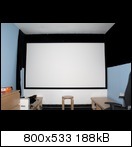
You normally want to avoid this at all costs, because reflections from the side walls hit your screen and kill your contrast.
With the room only partially treated, here's an image that shows how a reflection off the ceiling lights up the letterboxing area on the screen. (and there's a shadow on the screen from my calibration gear)
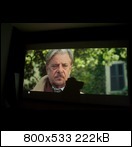
With the side walls and the ceiling partially treated, you couldn't even see where the corner of the room was, the screen appeared to be floating in space.
With any ambient light in the room though, the screen completely washes out. (matte white Carada screen) This could have looked better if I had changed the camera exposure, but I wanted as fair a comparison as possible.
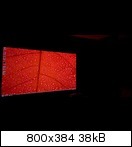
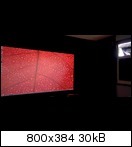
If you look at the edges, you can see how they are still relatively high contrast because there are no reflections off the material surrounding the screen.
Once the room was fully treated though, the images were
stunning. Other than correcting for camera distortion, these are unedited.
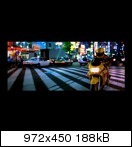
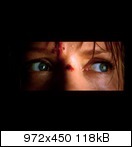

I had people come round who had high-end JVC projectors - I believe at the time they were approaching 100,000:1 contrast - and they were blown away by the image my low-end 4,000:1 Sony SXRD was putting out. (20,000:1 with iris)
Because they were using them in untreated rooms on matte white screens - but in the dark at least - the reflections in the room just annihilated the contrast performance of their projector. I think my entire setup cost less than one of the low-end JVCs at the time.
When the image is this high contrast, and it appears to be floating in space because you can't see the edges of the room, it's really something else - it no longer looks like a projected image.
But as good as it was, I don't know that I would do it again. To fully treat the room like that, you're basically giving up a room in your house and dedicating it to the projector. It doesn't matter how much lighting you have, the room is pitch black.
I think I would probably just buy one of the Black Diamond screens (preferably motorized) keep it away from the side walls, and watch in the dark without treating the room.
Even though they are primarily for use in bright rooms, the ambient light rejection of those screens are still beneficial in a dark room if it's untreated.

 Author
Topic: Projector Recommendation? (Read 13173 times)
Author
Topic: Projector Recommendation? (Read 13173 times)

